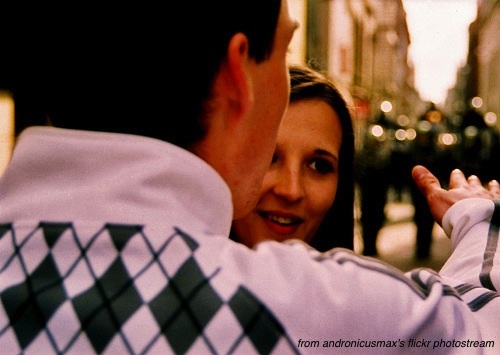Is Everything Good a Remix?
So you want to be creative?
1. Copy
2. Tinker
3. Combine
In part 3 of Everything Is a Remix: Elements of Creativity, Kirby Ferguson states that
“creativity isn’t magic. It evolves by applying ordinary tools of thought to existing material.”
He expands this idea by explaining that no one starts out original and that copying masters in order to learn isn’t a new or bad thing. Emulation allows you to get to know and understand the art form. After that you can tinker with it and create variations to come up with something completely new. You can them combine the variations with something else to create something unique and original.
In part 2 of Everything Is a Remix: Remix Inc. Kirby Ferguson proclaims that most box-office hits rely heavily on existing material.
By way of example, any spaghetti western takes the standard elements of a western and appropriates them, transforms them or subverts them.
According to SG Newwave, the Western began in the 1800’s as tales from the frontier (e.g. The Last of the Mohicans) which were later turned into movies. The plot of American Westerns usually consisted of a town in the American west being terrorized by a group of bandits until a nomadic gunslinger came to their rescue. It ended predictably with a showdown between the protagonist and the antagonist and good triumphing over evil. In most Westerns, Native Americans were generally depicted as savages. The first and oldest American Western film was the 10-minute silent film, The Great Train Robbery from 1903 (turn down the sound).
[youtube http://www.youtube.com/watch?v=Bc7wWOmEGGY&w=420&h=315]
Spaghetti Westerns got their name because they were westerns made in Italy and some of the first were directed by Sergio Leone. According to swdb, spaghetti westerns usually have an American-Mexican border setting and boorishly feature loud and sadistic Mexican bandits coming up against heroes with unusual names (e.g. Sartana, Sabata, or Django). Unlike traditional American Westerns, the story lines usually feature Gringos and Mexicans, but rarely Native Americans.
[youtube http://www.youtube.com/watch?v=gqvK80XGJkA&w=560&h=315]
Posters to Wikipedia shared that
the Spaghetti Western stars a ragged, laconic hero with superhuman weapon skill who joins an outlaw gang to further his own, secret agenda. There is usually a flamboyant Mexican bandit and a grumpy old man who serves as sidekick for the hero. For love interest, rancher’s daughters, school marms and bar room maidens were overshadowed by young Latin women (sometimes mothers) desired by dangerous men. The terror of the villains against their defenseless victims became ruthless and their brutalization of the hero when his treachery is disclosed became just as merciless, or more – just like the cunning used to secure the latter’s retribution.
Since these films were not originally made in the USA, the morality of the American west was less clear-cut than in American Westerns. According to Fistful of Westerns, many of the heroes of the Spaghetti Western are in fact ‘anti-heroes’ and it is not uncommon for the all the principle characters to be killed off by the end of the movie. As such, Spaghetti Westerns tend to be more violent than traditional American Westerns and several of the original met with censorship problems upon their release in the 1960s causing them to be cut or even banned in certain markets. Given their origin in a strongly Catholic society, it is perhaps not surprising these Spaghetti Westerns were also often rich in religious allegory.
In terms of cinematography, Marylin Wong explains on SG Newwave that Leone’s so-called Spaghetti Westerns were characterized by long takes, extreme wide shots, extreme close-ups and composition in depth. The long takes with moments of silence and stillness brought about both a slow rhythm and emphasized the intensity of particular scenes. This “calm before the storm” long shot and silence worked effectively in standoffs as it allowed the audience to either admire the beautifully shot scenery, pay close attention to the character’s body language or, relish in the music playing in the background. In addition, as in American Westerns, there was a recurrent use of close-ups. Extreme close-ups were able to capture the slightest movement of the face and eyes and, thus, get into the mind of the characters. Leone would cut from an extreme wide shot of the desert and jump right into an extreme close-up of the character’s eyes. In addition, he would make use of “composition in depth” by filming trains along the same axis as the train runs or showdowns by looking over the shoulder of one of the participants rather than shooting from the side. This provided a more 3-dimensional look to 2-dimensional film and allowed the audience to feel more as though they were part of the action.



Despite this, according to Swdb, Spaghetti Westerns tend to be more action oriented than their American counterparts. Dialogue is sparse and some critics have believe that they were originally constructed more as operas, using the music as an illustrative ingredient of the narrative. Ennio Morricone worked closely with Leone to compose music that was as unusual as the visuals. Not only did he use instruments like the trumpet, the harp or the electric guitar, he also added whistle, cracking whips and gunshots. Marilyn Wong adds that since Morricone personalized each character’s theme music, occasionally altering it to reflect the change in character or emotions, Leone ensured that the dialogue and music wouldn’t overlap each other. This allowed the audience to fully appreciate Morricone’s music and further build tension. Some say he was a key factor in the genre’s success.
As Marilyn Wong also points out, Leone took the traditional American Western plots and infused his own style into it, creating a seemingly new and unique product. This cycle of reinvention continues.
In an interview with Quentin Tarantino that I watched on YouTube a few weeks ago (but can’t currently find) he said the best preparation for making movies is to watch a lot of movies. I suspect that he has spent many hours copying the work of masters (or at least looking at their work and dissecting it), transforming it and combining it. In my opinion, he is shockingly adept at fusing modern storylines with traditional genres and this it makes for some very good movies. In his films, he tends to stick to a specific genre or sub-genre but with very unlikely settings or very unlikely characters. I am looking forward to his upcoming spaghetti western about American slavery.
[youtube http://www.youtube.com/watch?v=JJx09hnNEVA&w=560&h=315]
All this seems to uphold Kirby Ferguson’s hypothesis that everything is a remix but it also made me wonder if the converse is true…
Do non-hits also rely on existing structures or formulae or are they not commercial successes, at least in part, because they are not based on story-telling narratives that have stood the test of time?
Yesterday I had a chance to attend Elliot Grove’s Saturday Film School through Raindance Canada and he was certainly of the belief that without a good story, you have nothing. He illustrated that point by showing 15 second videos created with cell phones that were still effective because they told a good story. I need to remember that the next time I post a video!
I wonder, are there still stories left to be told? How did the structures we keep going back to come about? Can new structures be developed that others will emulate?
In the meantime, keep copying, tinkering and remixing. It leads to come great stuff!
Leave a Reply